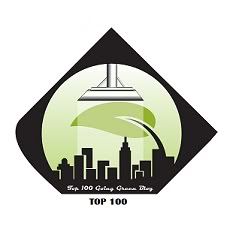







Laser [acronym for light amplification by stimulated emission of radiation] , device for the creation, amplification, and transmission of a narrow, intense beam of coherent light, visible electromagnetic radiation.
Of the entire electromagnetic spectrum, the human eye is sensitive to only a tiny part, the part that is called light.
The coherent light produced by a laser differs from ordinary light in a way that it is made up of waves all of the same wavelength and all in phase; ordinary light contains many different wavelengths and phase relations.
The laser can be explained on the basis of the quantum theory.
The electromagnetic energy is transmitted in discrete amounts (i.e., in units or packets) called quanta.
A quantum of electromagnetic energy is called a photon, the particle composing light and other forms of electromagnetic radiation, sometimes called light quantum.
The energy carried by each photon is proportional to its frequency.
An atom or molecule of a substance usually does not emit energy; it is then said to be in a low-energy or ground state. When an atom or molecule in the ground state absorbs a photon, it is raised to a higher energy state, and is said to be excited.
The substance spontaneously returns to a lower energy state by emitting a photon with a frequency proportional to the energy difference between the excited state and the lower state.
In the simplest case, the substance will return directly to the ground state, emitting a single photon with the same frequency as the absorbed photon.
In a laser, the atoms or molecules are excited so that more of them are at higher energy levels than are at lower energy levels, a condition known as an inverted population.
If a photon whose frequency corresponds to the energy difference between the excited state and the ground state strikes an excited atom, the atom is stimulated to emit a second photon of the same frequency, in phase with and in the same direction as the bombarding photon.
The bombarding photon and the emitted photon may then each strike other excited atoms, stimulating further emissions of photons, all of the same frequency and all in phase.
This produces a sudden burst of coherent radiation as all the atoms discharge in a rapid chain reaction.
Often the laser is constructed so that the emitted light is reflected between opposite ends of a resonant cavity; an intense, highly focused light beam passes out through one end, which is only partially reflecting.
If the atoms are pumped back to an excited state as soon as they are discharged, a steady beam of coherent light is produced.
Characteristics of Lasers
The physical size of a laser depends on the materials used for light emission, on its power output, and on whether the light is emitted in pulses or as a steady beam.
In some lasers, a gas or liquid is used as the emitting medium.
Applications of Lasers
When lasers were invented in 1960, they were called "a solution looking for a problem".
In every section of modern society, including consumer electronics, information technology, science, medicine, industry, law enforcement, entertainment, and the military.
The first application of lasers visible in the daily lives of the general population was the supermarket barcode scanner, introduced in 1974.
The laserdisc player, introduced in 1978, was the first successful consumer product to include a laser, but the compact disc player was the first laser-equipped device to become truly common in consumers' homes, beginning in 1982, followed shortly by laser printers.
Some of the other applications include:
Medicine: Bloodless surgery, laser healing, surgical treatment, kidney stone treatment, eye treatment, dentistry
Industry: Cutting, welding, material heat treatment, marking parts
Defense: Marking targets, guiding munitions, missile defence, electro-optical countermeasures (EOCM), alternative to radar
Research: Spectroscopy, laser ablation, Laser annealing, laser scattering, laser interferometry, LIDAR, Laser capture micro dissection
Product development/commercial: laser printers, CDs, barcode scanners, thermometers, laser pointers, holograms, bubble grams.
Laser lighting displays: Laser light shows
Laser skin procedures such as acne treatment, cellulite reduction, and hair removal.
Thursday, August 13, 2009
laser
Posted by Meenu Khare at 12:09 AM
Labels: Applications of Lasers, laser, meenu khare, photon, quantum theory, Science and Technology
Subscribe to:
Post Comments (Atom)




3 Comments:
Adbhut.
{ Treasurer-S, T }
श्री कृष्ण जन्माष्टमी की हार्दिक शुभकामनाएँ। जय श्री कृष्ण!
---
INDIAN DEITIES
Intresting phographs
आज़ादी की 62वीं सालगिरह की हार्दिक शुभकामनाएं। इस सुअवसर पर मेरे ब्लोग की प्रथम वर्षगांठ है। आप लोगों के प्रत्यक्ष व अप्रत्यक्ष मिले सहयोग एवं प्रोत्साहन के लिए मैं आपकी आभारी हूं। प्रथम वर्षगांठ पर मेरे ब्लोग पर पधार मुझे कृतार्थ करें। शुभ कामनाओं के साथ-
रचना गौड़ ‘भारती’
Post a Comment